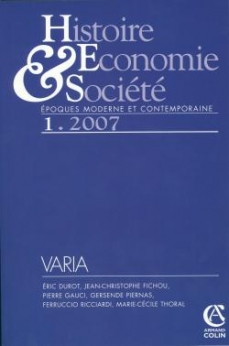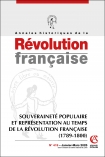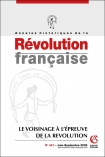
Histoire, économie & société (1/2007)
Numéro épuisé
Recevez les numéros de l'année en cours et accédez à l'intégralité des articles en ligne.
L’ Auld Alliance disparaît en 1561 après quatre années de crise qui marquent aussi son apogée. Sous l’impulsion de la politique d’Henri II activement soutenue par les Guises, Marie Stuart – dont la mère, Marie de Guise, est régente en Écosse – est mariée au dauphin François (1558) tout en prétendant à la couronne d’Angleterre contre Elizabeth I ère , situation intolérable pour cette dernière surtout lorsque Marie Stuart devient également reine de France (1559-1560). Dans le même temps, un « malcontentement » écossais se structure avec les Lords of the Congregation , appuyés par John Knox, face au pouvoir français catholique. François II et ses oncles les Guises s’engagent avec ambassadeurs et gens de guerre à la fois contre la délégitimation de la régente en Écosse et l’aide militaire anglaise apportée aux lords écossais en train de s’imposer. Dans le contexte de la paix du Cateau-Cambrésis, que les princes cherchent à préserver, s’imbriquent le conflit larvé franco-anglais et la question de la légitimité du pouvoir et de la réforme en Écosse. Les négociations permanentes et les campagnes de justification dévoilent cet épisode charnière entre un premier XVI e siècle renaissant et le nouveau visage que prend la Chrétienté avec l’établissement d’Églises protestantes.
In 1561, after four years of crisis, which were also its apogee, the Auld Alliance came to an end. Under the influence of Henry II, sustained by the Guises, Mary Stuart, whose mother, Mary of Guise was the regent of Scotland, was married to the Dauphin of France, Francis (1558). She claimed the English crown as well, an unbearable claim for Elizabeth I, all the more so when Mary became Queen of France (1559-1560). At the same time, emerged a Scottish “malcontentment” on the part of the lords of the Congregation, supported by John Knox. They opposed the French Catholic power. Francis II and his uncles, the Guises, fought, helped by their ambassadors and men of arms, to keep Mary’s mother as regent and against the military assistance brought by the English to the Scottish lords who were then gaining power. Within the context of the Peace of Cateau-Cambrésis, which the princes were trying to hold on to, the conflict between the French and the English intensified with the questions of legitimacy and Reformation in Scotland. The never-ending negotiations and campaigns of justification show this period as a turning point between the early 16 th century of the Renaissance and the new face of Christendom with its budding Protestant churches.

